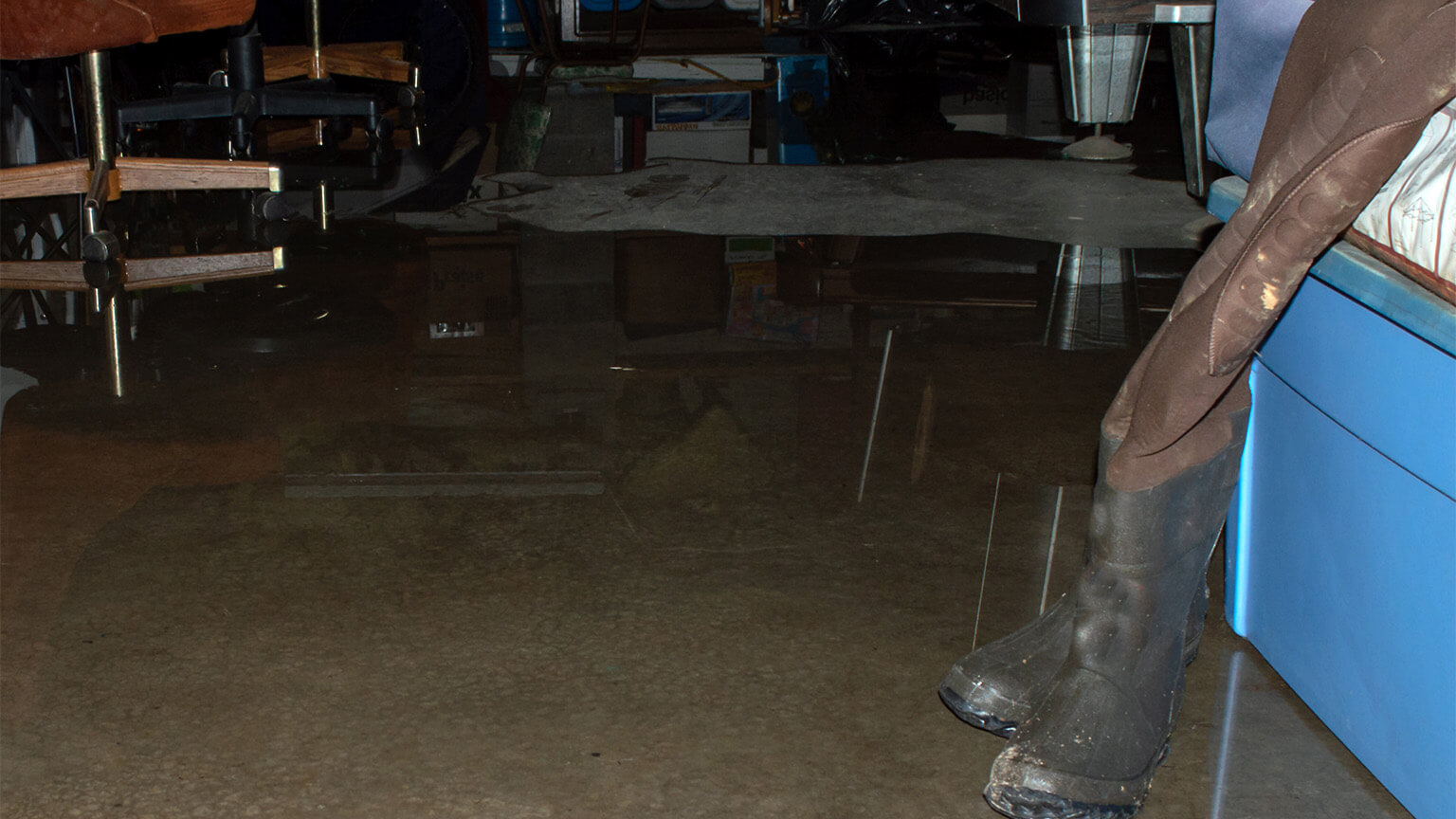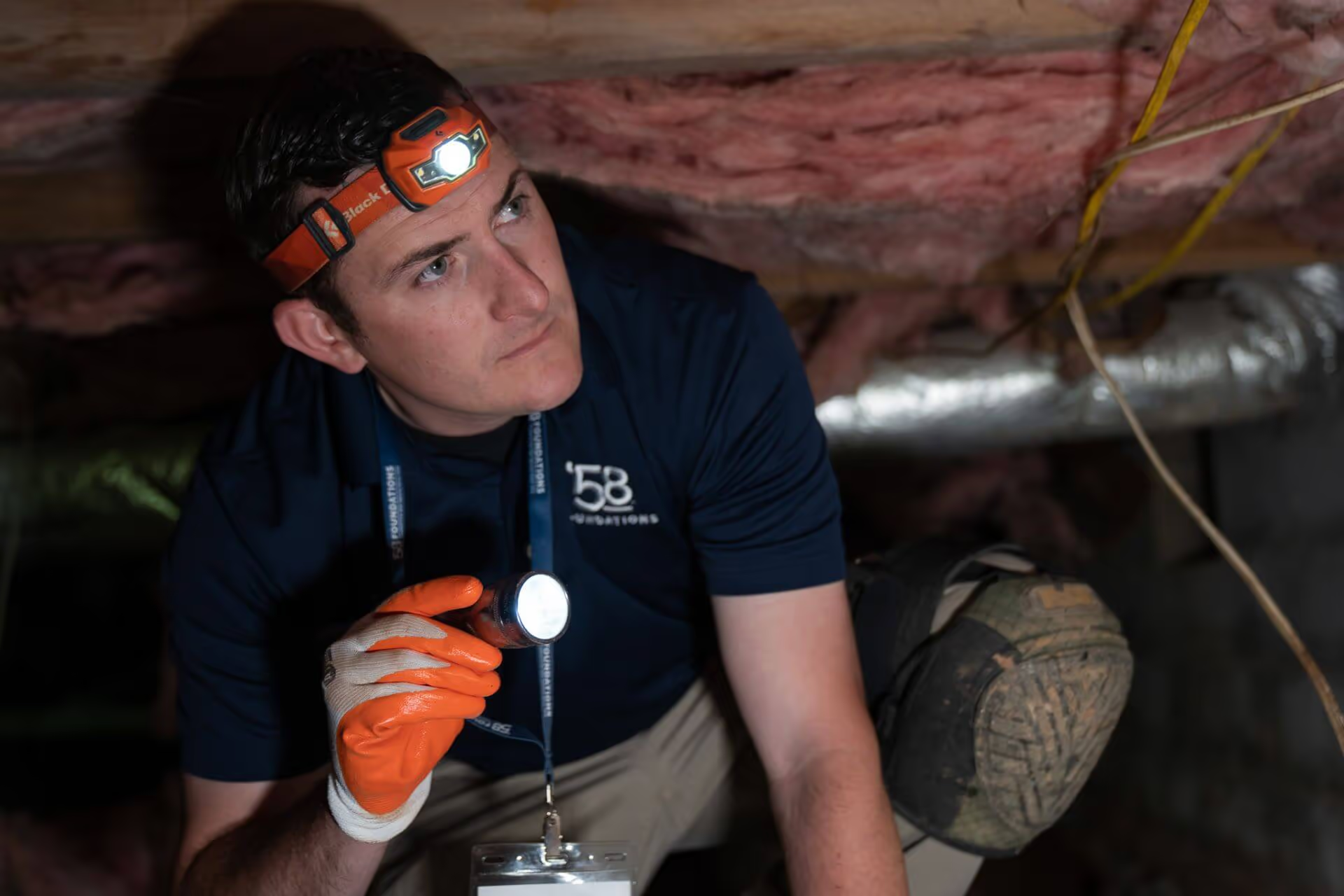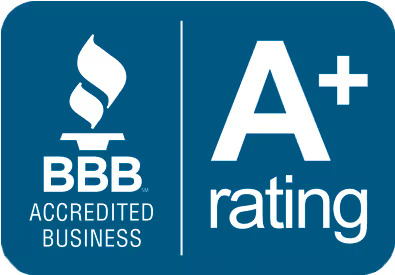
If your home features a sump pump in your basement or crawl space, it’s important to check on it regularly to ensure it’s working properly—especially prior to any local storm seasons. A sump pump failure in the middle of a storm can mean a wet basement, a flooded crawl space, and water damage to any stored belongings in your lower level. At ’58 Foundations & Waterproofing, we perform an extensive sump pump check-up that includes not only the mechanics of the pump itself, but of the discharge line, the joints in the line, the check valve, the electrical, and much more. If you’d like to have us perform a system maintenance check, you can always contact us whether you have our system or not. We service all sump pump makes and models.
Below, you’ll learn how to tell if your sump pump is working. This is so you can be assured that your system is operating smoothly when you need it most.
In the following disclaimer, this is so we can ensure the integrity of our systems. But if you have another system without a warranty or used a company without a service department, then we’ve simplified how you can check to see if your sump pump is working.
Disclaimer:
The act of taking apart and testing your sump pump can create problems for your system. We DO NOT recommend that you service your own sump pump system, and instead hire a professional.
WARRANTY NOTICE: If you have a ’58 Foundations & Waterproofing sump pump system, YOU WILL VOID YOUR WARRANTY if you perform your own service or maintenance on the system.
To effectively test your sump pump, it’s important to first check your entire system for any clogs or blockages. Before getting started, be sure to have these basic tools and safety equipment handy:
Before testing your sump pump, inspect your pump’s drainage channels. Also check the outlet at the end of your pump’s discharge line. The discharge line is the pipe that carries water from your pump away from your foundation. Once located, be sure the drains and lines are not clogged from dirt, debris, sediment, or plant matter. If a clog or blockage is found, promptly remove it.
Just like your sump pump’s drainage channels, discharge line, and discharge outlet can become clogged, your sump pump and sump pit can also become dirty or clogged. After you locate your sump pump and sump pit in your basement or crawl space, be sure to unplug the pump from its electrical outlet before beginning your inspection.
With all power cut off, you can disconnect the pump from the discharge line and remove it from the pit. But be sure to wear gloves and safety glasses, as this can get messy. Also, be sure not to pull on any pipe connections/joints on the discharge line such as T’s or elbows that are glued together. This could cause current or future leaks at these joints. If your pump is raised with bricks or another type of base material, be sure to remove them, as well. Now that the pump and base materials are out of the pit, closely inspect them with a high-powered flashlight.
If the sump pump has dirt, sludge, or sediment build-up (especially near the screen or small opening where water enters the pump), safely transport it outdoors (e.g., inside a bucket or tarp to prevent tracking debris through your home) and clean it off using your garden hose or a scraping tool, if needed.
Note: Do not use any chemicals to clean your sump pump or sump pit. Water is the safest and most efficient way to clean them.
With your pump and pump base materials clean, you can now inspect your sump pit using your flashlight. If it has any standing water and you can’t see the bottom of the sump pit, be sure to use a wet/dry shop vacuum to remove it first. Then, take a close look at the basin of the pit, as well as the inlet of your pump’s discharge line. If there is any sludge build-up, scoop it out and place it in a trash bag or bucket for disposal.
Once your sump pump, sump pit, discharge line, and discharge outlet are clear and free from debris or clogs, you can begin the actual testing process. First, reinstall your sump pump by placing it back into the sump pit and reconnecting it to the discharge line. Make sure all connections and clamps are tight. Then, you can plug its electrical cord back into its outlet.
Using any nearby water supply, fill up a clean, empty bucket with enough water to fill the basin in your sump pit and trigger the float switch. Once the float switch is triggered and the pump kicks on, watch closely as water is pumped away to ensure it exits the basin efficiently. After the pumping cycle is complete, the sump pump should turn itself off. Repeat this process a second time to confirm the pump is activating and working properly.
We advise not lifting a float or manually activating a pump without water. These are not viable testing methods. The sump pump may kick on and have an audible sound, but it is possible that it would not actually pump water.
With water testing a pump you can also see the pump flow rate, this can be an indicator that the pump is at the end of its lifespan and needs to be replaced. A low flow rate due to a worn pump can result in the pump being overwhelmed in a rain event.
Taking apart and testing your sump pump can cause problems for your system. We recommend hire a professional to service your sump pump system.
If you’re having a difficult time testing your sump pump—or your sump pump keeps running or is not working properly during your tests—the professionals at ’58 Foundations & Waterproofing can help.
As one of the only companies to offer a maintenance program for sump pumps and basement waterproofing systems (even if you did not purchase your sump pump through us), we can help you keep your sump pump running efficiently all year long. Our team recommends annual testing and maintenance of your sump pump system to keep it in optimal working condition.
If you’re a ’58 Foundations & Waterproofing customer, we have an annual maintenance program to service your system. If you have another system, and it is no longer under warranty, we can help! We service all makes and models of all sump pumps.
If your current sump pump isn’t working properly or unable to expel water away from your home, you might need to replace it with a new one. Fortunately, ’58 Foundations & Waterproofing has tested numerous makes and models of sump pumps—meaning we only offer the most reliable, long-lasting, and durable pumps and pump liners available.
In addition, we can help you select the correct pump with the right amount of horsepower for your unique situation, as well as equip you with a backup sump pump system that keeps your home protected should your main system fail for any reason.
Keeping your basement or crawl space dry is crucial to the health and safety of your home. Excess moisture in your lower level can cause problems including mold, wood rot, and water damage. To prevent costly repairs, it’s important to ensure your sump pump system works when you need it most.
Reach out to ’58 Foundations & Waterproofing today to schedule a sump pump inspection or to learn more about the sump pumps and maintenance plans we offer.






We respect your privacy. By submitting, you authorize '58 Foundations and Waterproofing to reach you via call, email or text for information about your project needs. We will never share your personal information with third parties for marketing purposes. You can opt out at any time. Message/data rates may apply. Consent is not a condition of purchase. Privacy Policy